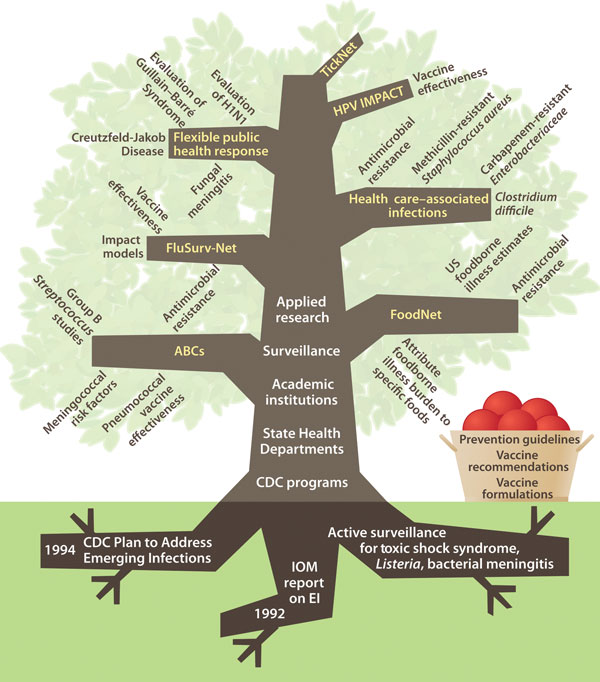Volume 21, Number 9—September 2015
THEME ISSUE
Emerging Infections Program
Emerging Infections Program
Cultivation of an Adaptive Domestic Network for Surveillance and Evaluation of Emerging Infections
Figure 1

Figure 1. Structure and development of the Emerging Infections Program, United States. ABCs, Active Bacterial Core Surveillance; CDC, Centers for Disease Control and Prevention; IOM, Institute of Medicine; EI, emerging infections; HPV, human papillomavirus.
Page created: August 12, 2015
Page updated: August 12, 2015
Page reviewed: August 12, 2015
The conclusions, findings, and opinions expressed by authors contributing to this journal do not necessarily reflect the official position of the U.S. Department of Health and Human Services, the Public Health Service, the Centers for Disease Control and Prevention, or the authors' affiliated institutions. Use of trade names is for identification only and does not imply endorsement by any of the groups named above.